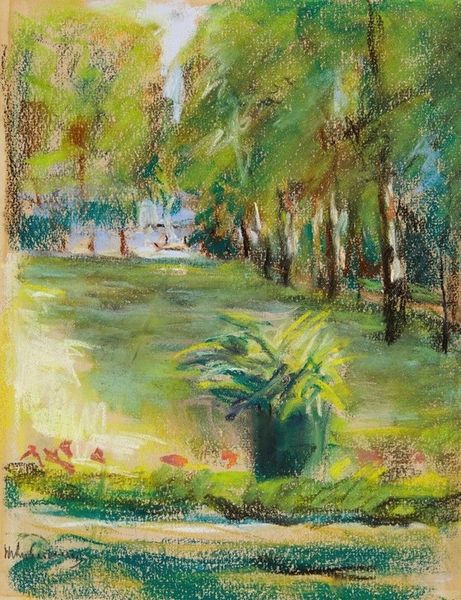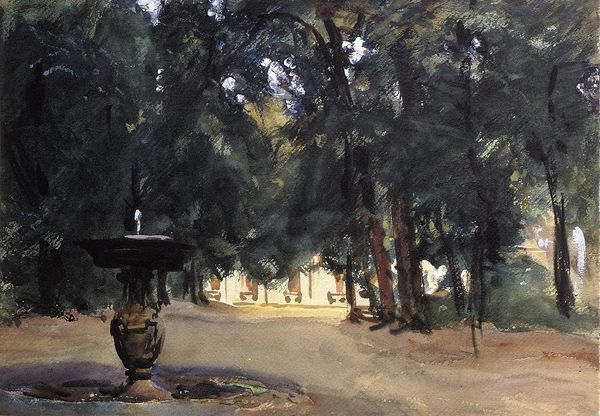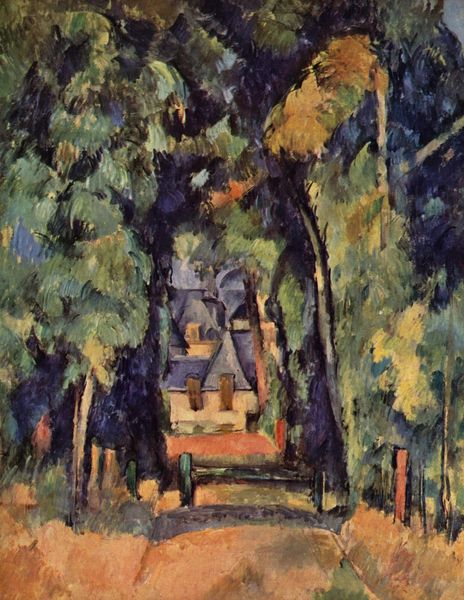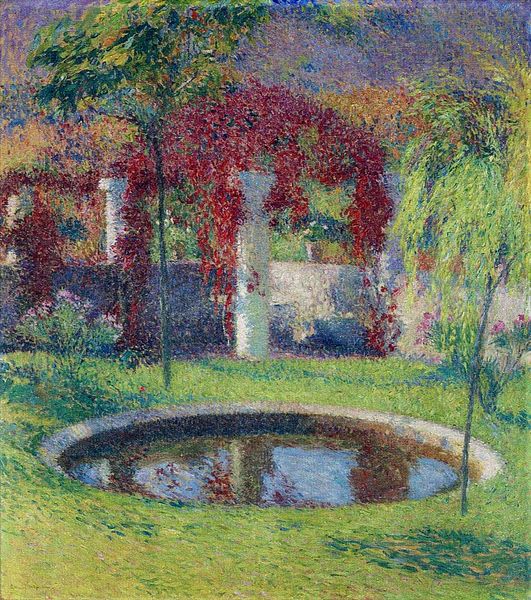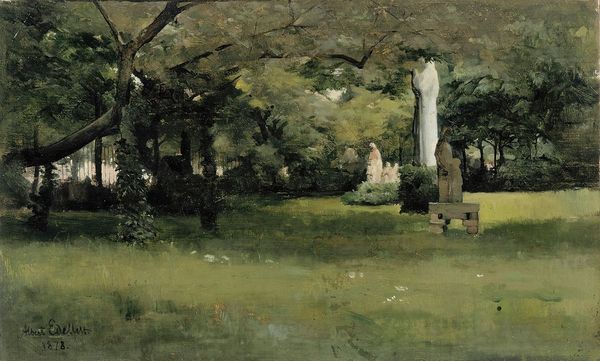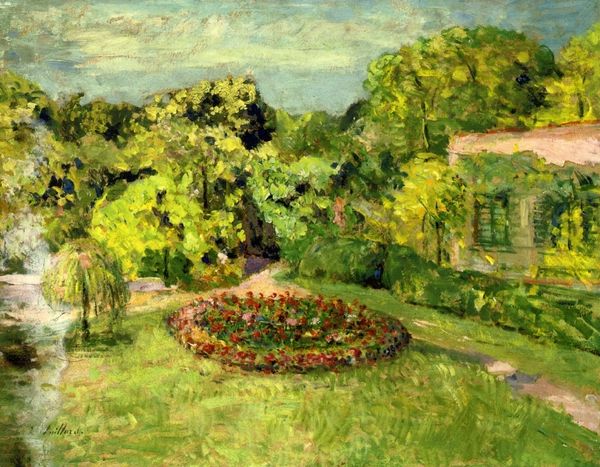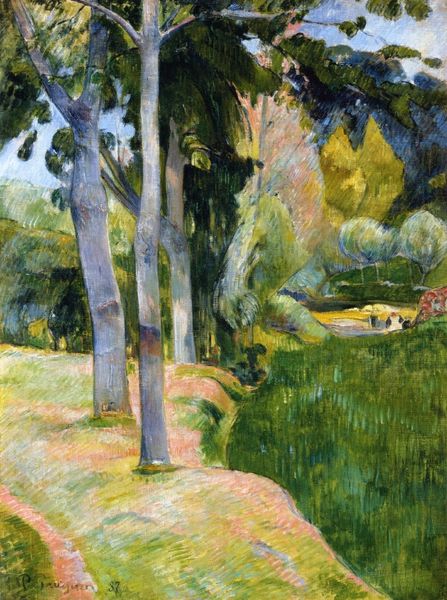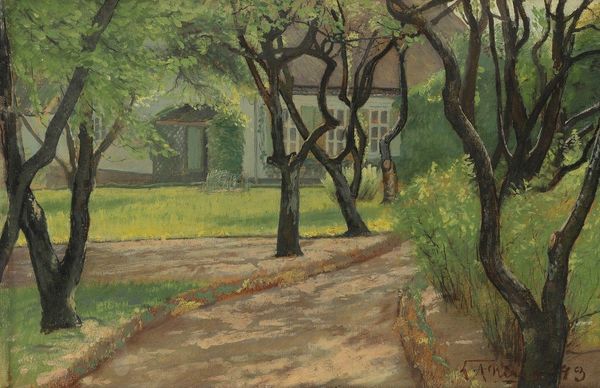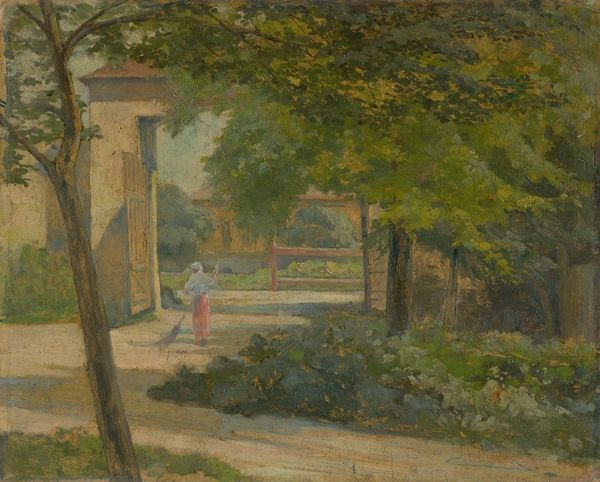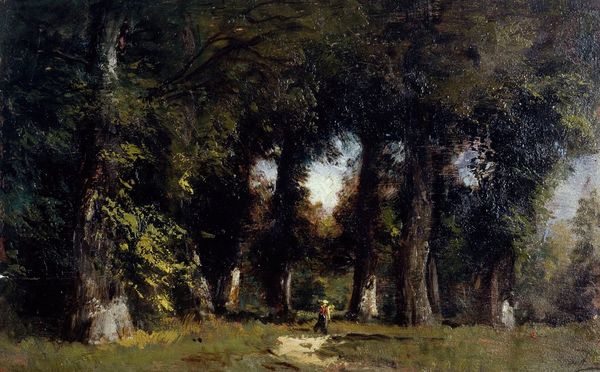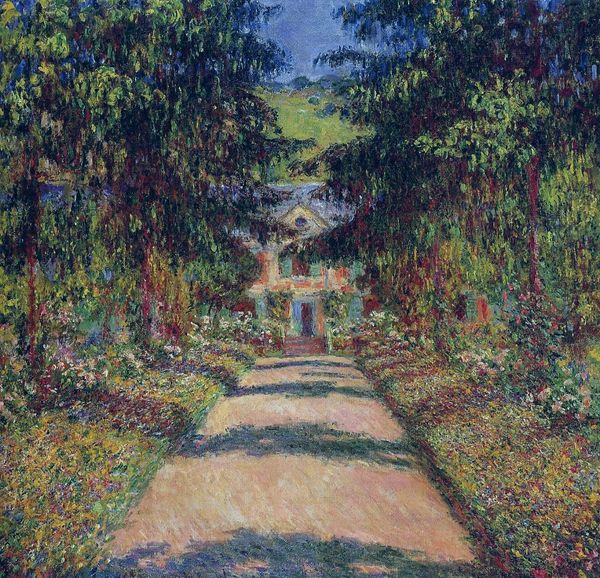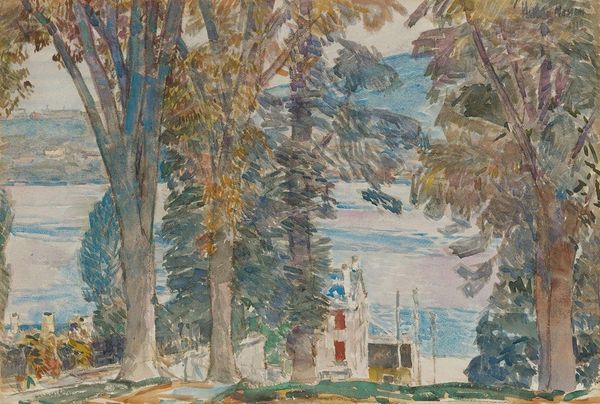
Dimensions: 74 x 93 cm
Copyright: Public domain
Curator: Looking at "Terrace overlooking the flower garden in Wannsee," created by Max Liebermann in 1918, one is immediately struck by its shimmering light and verdant tones. Editor: It gives me a sense of peace, but almost a melancholy stillness, like the last days of summer. You can almost feel the sun but there’s something resigned in that light. Curator: Interesting that you say that. The imagery of gardens has carried connotations of tranquility, retreat, and contemplation across centuries. Here, though painted during the final year of World War I, it could represent a desire to escape the realities of a chaotic world. Editor: I think the casual gathering of figures on the terrace contrasts oddly with this idyll. Their presence doesn't quite animate the scene; instead, it emphasizes a static quality. Look at the weight and gravity of how they are presented, perhaps alluding to societal structures and power. Curator: Perhaps. Liebermann's use of impressionistic brushstrokes helps to emphasize the immediacy of the scene, the feeling that it’s caught at a precise moment in time. In many cultures, gardens, terraces, and their associated activities carry implications of a return to nature. What does that signify here, during wartime? Editor: Precisely! We must contextualize this piece: painted by a Jewish artist at a time when anti-Semitism was rising, and societal norms were being upended by war. Did Liebermann intentionally imbue this scene with deeper meaning, given his social and political circumstances? Or did the public project meaning *onto* it? That becomes the core question. Curator: An important point, how reception of images adapts according to the viewer. Certainly, for me, the enduring symbols in his artwork is that of beauty and hope during difficult periods. It serves as a powerful statement. Editor: Agreed. This scene acts as an intimate glimpse into a particular socio-historical moment. Through art, a record is imprinted into culture, creating lasting cultural narratives and memory, while leaving viewers the difficult task of how and why this endures.
Comments
No comments
Be the first to comment and join the conversation on the ultimate creative platform.


